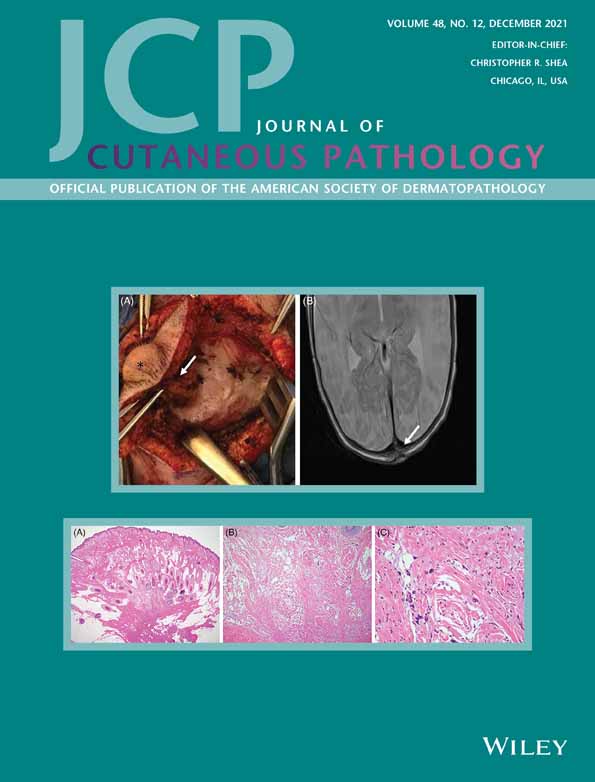Primary cutaneous anaplastic large-cell lymphoma with 6p25.3 rearrangement exhibits a biphasic histopathologic pattern: Two case reports and literature review
Funding information: CAMS Innovation Fund for Medical Sciences, Grant/Award Number: CIFMS-2017-12M-I-017; Nanjing Incubation Program for National Clinical Research Center, Grant/Award Number: 2019060001; Six Major Talent Summit in Jiangsu Province, Grant/Award Number: WSN-030
Abstract
Background
Primary cutaneous CD30+ lymphoproliferative diseases are the second most common group of cutaneous T-cell lymphomas, including lymphomatoid papulosis (LyP), primary cutaneous anaplastic large-cell lymphoma (pcALCL), and borderline cases. These diseases form a spectrum and may show overlapping histopathological, phenotypic, and genetic features. In the 2016 WHO classification, LyP with 6p25.3 rearrangement was introduced as a rare new subtype of LyP and showed distinctive clinicopathological features. The striking biphasic histopathologic pattern presented with larger transformed lymphocytes diffusely infiltrating the dermis and smaller atypical cells infiltrating the epidermis as in pagetoid reticulosis.
Methods
Herein we report two cases of pcALCL with rearrangement involving the DUSP22-IRF4 locus on 6p25.3 that show the same particular biphasic histopathologic pattern. We review the literature regarding five similar reported cases and discuss the clinical, pathologic immunotype and follow-up features.
Results
Our findings suggest that the biphasic histopathologic pattern is not a unique characteristic of LyP with 6p25.3 rearrangement.
Conclusion
Cutaneous CD30+ lymphoproliferative diseases with 6p25.3 rearrangement may have the same biphasic histopathological pattern and favorable prognosis, although a variety of clinical manifestations ranging from LyP to pcALCL and even anaplastic lymphoma kinase negative systemic ALCL with secondary cutaneous involvement may be observed.
Open Research
DATA AVAILABILITY STATEMENT
The data that support the findings of this study are available from the corresponding author upon reasonable request.




